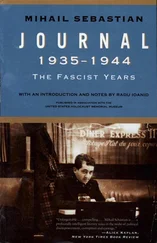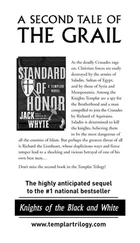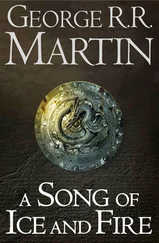It is clear that war in the past has more often resembled the wars we have been fighting since 9/11 more than the wars we fought in Europe during the twentieth century. In fact, most of mankind’s armed conflict has been identity-driven violence waged by subnational parties rather than the uniformed forces of states.
So why do our institutions, and even our labels, favor “conventional” war? Simply because that is the kind of war we have been preparing to fight and that we prefer to fight. When decades and billions are spent preparing to do a certain thing, you will convince yourself institutionally that is what will be done.
Clausewitz was not an aberration. He was a product of an age in which city-states and empires were giving way to a new principle for organizing society: the modern nation-state. Evolving slowly out of the Peace of Westphalia of 1648, which closed several bloody decades of war between the Christian powers of Europe, the new international system would see loyalty and the locus of identity slowly shift from religion and feudal rulers to the nation of citizen and, eventually, to its representative government.
As the international political system progressed, the national elites of these new countries came to expect their future enemies to be other nations, other governments, and their regularized forces. Each country, therefore, built systems that would prepare it to fight the regular forces of another state should war become inevitable. In the West, the military culture began to de-emphasize war with irregular foes such as tribes or insurgent groups. We had regular armies and believed that we would be fighting regular armies in the future.
Over time, the Westphalian nation-state system brought about Westphalian security structures—means and methods for fighting other countries until every nation had an army, air force, and, if it was lucky, a navy. We allowed our internal military structure to shape our expectations of whom we would be fighting and how. The nations of the world, assuming that the new global system would continue to shape warfare, and ignoring the possibility that the kind of warfare that had predominated throughout history might again become the norm, developed military capabilities that are not suited to today’s conflicts against al-Qaeda, ISIS, and other non-state actors motivated by ideology.
This book will explain how we need to adjust our fighting systems to deal with the resurgence of the older, more traditional types of conflict while maintaining our readiness for “conventional” war. At the same time, we will look at how information and technology have changed the practice of and public response to war.
Today a civilian, without a uniform, sitting in a control room in the American Midwest watching live footage from an unmanned aerial vehicle (UAV) flying over Afghanistan can decide in real-time to fire a missile from that drone at a target thousands of miles away. At the same time, if that missile should injure or kill innocent civilians, bystanders can instantly post photographs of the victims on the internet, igniting a furious and crippling public debate about the military campaign of which that UAV is just a small part.
This scenario is beyond the experience of the commanders and politicians of Clausewitz’s age. How these new realities affect the way Americans think about, relate to, and ultimately support or oppose a military operation will be part of our discussion. At the same time, we will come to appreciate the lessons learned at great cost by Americans fighting for our country against unconventional foes and what it takes to win.
America’s Warriors
Stephen Decatur
To the Shores of Tripoli

Our war with jihadis did not start on that beautifully clear Tuesday morning of September 11, 2001.
Although it felt as though the events of that day in New York, Washington, Shanksville, and Pennsylvania marked a frightening new era and our entry into a new war, they did not. In fact, our country has been at war with religiously-motivated Muslim enemies for almost as long as it has been an independent nation.
Can you imagine Americans being held as slaves in foreign lands for years on end as our government, helpless to stop the kidnappings, paid tribute to the captors? This isn’t some dystopian movie plot dreamt up by the febrile mind of a Hollywood scriptwriter. This is what happened to American seamen shortly after our birth as a free republic.
America’s successful revolt against the British was historically remarkable. The idea that a handful of colonies could break the grip of the most powerful imperial force the world had ever seen must have seemed almost impossible to those who waged the Revolutionary War. But win we did.
That victory, however, was costly. The new country’s treasury was depleted, and her ocean-going vessels, a crucial lifeline for the remote former colonies, no longer sailed under the Union Jack or enjoyed the protection of the Royal Navy. Almost overnight, American ships in the Mediterranean fell prey to the corsairs of the Barbary States, the Islamic principalities of North Africa, which had developed state-sponsored piracy into a high art. The Barbary pirates were afraid to disrupt the naval trade of the European powers, but they were happy to attack unescorted American vessels, steal their cargo, and make hostages or slaves of their crews and passengers. In fact, their audacity knew few limits.
In 1785, the year that America settled on the dollar as its new currency (the world’s first decimalized currency), Mohammed, the Ottoman dey of Algiers, declared war on the United States, signaling that the Muslim-crewed corsairs patrolling the Mediterranean were free to attack American ships.
The Treaty of Paris had formally closed America’s Revolutionary War only two years earlier, and the fledgling nation lacked the funds to build a long-range naval force able to protect its merchant vessels. Nor could it pay the tribute to the Barbary States that would guarantee safe passage of American ships. The pirates, therefore, proceeded to trawl the waters of the Mediterranean for defenseless American plunder. And they were successful for years.
But eventually, as she found her footing and Congress finally appropriated the requisite funds, our new nation began to build its navy: a navy that would take the war to the maritime jihadists with a force manned by young officers and enlisted men prepared to fight all the way to “the shores of Tripoli.” One of the most gallant American fighters of this new warrior caste was Stephen Decatur.
Born in 1779 in Maryland to a naval officer of French descent and a mother of Irish lineage who had fled Philadelphia during the Revolutionary War, the young Decatur fell in love with the sea at the tender age of eight after accompanying his father on an Atlantic crossing. The die was cast, and eventually his passion for the sea and his love of country would carry Decatur to fame in our first war with a jihadi enemy.
After only a year of studies at the University of Pennsylvania, the young Decatur surrendered to his passions and became part of the team constructing the frigate United States , joining its crew as an eighteen-year-old midshipman on its commissioning in May 1797.
On the United States he learned the ways of the sea under the revolutionary hero Commodore John Barry, and a year later, almost to the day, Decatur was commissioned a lieutenant in the United States Navy by President John Adams. Within a few years, this navy numbered more than three dozen ships, and its commander in chief was Thomas Jefferson, who had had enough of the Muslim predations. Paying ransom and tribute to these petty potentates was, in his view, a shameful surrender to inferior adversaries.
Читать дальше













